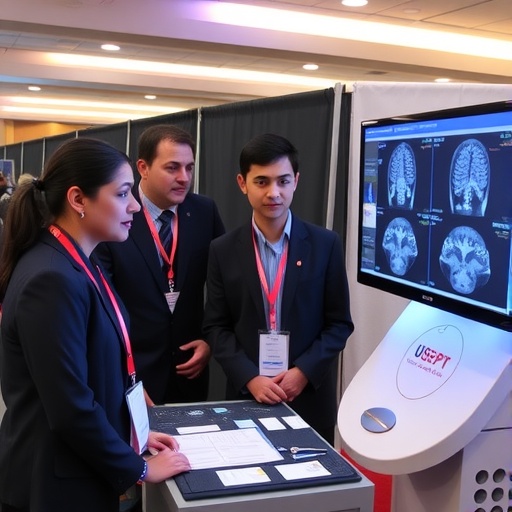
In the landscape of hematologic malignancies, smoldering multiple myeloma (SMM) occupies a critical clinical niche as an asymptomatic precursor to overt multiple myeloma (MM). Understanding the risk stratification and therapeutic interventions that can delay or potentially prevent progression to MM has captivated researchers and clinicians alike. Recent developments based on robust clinical trials and biomarker-driven models have begun to reshape the management framework for patients harboring this intermediate disease state. Advanced models integrating clinical, cytogenetic, and molecular parameters now enable refined categorization of patients according to their risk of progression, laying the groundwork for more personalized therapeutic strategies.
Central to these advances is the widely adopted International Myeloma Working Group (IMWG) 20-2-20 risk model, commonly described as the three-factor model. This model uses serum M protein concentration, the ratio of involved to uninvolved serum free light chains, and the percentage of bone marrow plasma cell infiltration to segregate patients into low, intermediate, and high-risk classes. The elegance of this approach lies in its ability to predict the probability of progression with reasonable precision, facilitating clinical decision-making. Moreover, the incorporation of cytogenetic abnormalities into the model, creating a four-factor system, further discriminates patient risk groups, enabling classification into four distinct prognostic categories. Notably, retrospective analyses have shown that patients identified as high-risk by these models manifest significantly higher rates of progression within two years, underscoring the need for vigilant monitoring and potential early intervention.
Traditionally, a conservative ‘watch and wait’ approach has dominated the management of SMM, reflecting the absence of clinical symptoms and the goal of avoiding unnecessary treatment toxicity. However, pivotal phase III clinical trials have challenged this paradigm by demonstrating that early therapeutic intervention can alter the disease trajectory in patients with high-risk SMM. Particularly, regimens including lenalidomide, alone or in combination with dexamethasone, have exhibited prolonged progression-free survival (PFS) and, in some cases, overall survival (OS) benefits compared to observation alone. Although these studies were not designed with regulatory approval endpoints, their data have invigorated clinical research efforts aimed at augmenting treatment protocols to transform SMM from a pre-malignant state into a potentially curable condition.
.adsslot_1MjoRs8PwH{width:728px !important;height:90px !important;}
@media(max-width:1199px){ .adsslot_1MjoRs8PwH{width:468px !important;height:60px !important;}
}
@media(max-width:767px){ .adsslot_1MjoRs8PwH{width:320px !important;height:50px !important;}
}
ADVERTISEMENT
One emerging strategy to delay progression to MM involves the targeted use of the anti-CD38 monoclonal antibody, daratumumab. The CENTAURUS phase II trial explored the impact of varying intensities of intravenous daratumumab monotherapy in a multinational cohort of patients categorized as intermediate or high-risk. Intriguingly, longer and intermediate dosing schedules were associated with remarkably prolonged median PFS durations, in sharp contrast to shorter schedules, suggesting a dose-response relationship. These findings have provided a proof-of-concept that immunotherapeutic targeting of plasma cells during the asymptomatic phase can exert durable disease control and possibly modify the underlying biology of SMM.
The phase III AQUILA trial further solidified daratumumab’s role, employing a subcutaneous administration modality for a fixed three-year period in patients classified as having high-risk SMM based on novel inclusion criteria. This trial employed a more expansive definition of high risk, including factors such as elevated serum M protein, IgA predominance, immunoparesis affecting multiple uninvolved immunoglobulins, a high serum free light chain ratio, and a substantial yet sub-threshold bone marrow plasma cell burden. Remarkably, the trial demonstrated significantly improved 5-year PFS and OS rates in the daratumumab arm compared to active monitoring, with hazard ratios indicating approximately a 50% reduction in risk of progression or death. Importantly, the benefit of daratumumab extended across all subgroups, and particularly pronounced efficacy was noted in patients characterized as high-risk according to the classical IMWG three-factor system. These results highlight the potential of early intervention to not only postpone disease evolution but also to enhance survival outcomes.
Moreover, concerns regarding whether early treatment might compromise responsiveness to subsequent therapies have been allayed by the observation that patients initially treated with daratumumab retained superior PFS even after transitioning to next-line treatments. Notably, only a minority of patients in the observation arm eventually received daratumumab-based regimens upon progression, which may have influenced comparative survival outcomes. These insights underscore the evolving dialogue around timing and sequencing of therapies in SMM, balancing the risks of overtreatment against the harms of delayed intervention.
Moving beyond delay strategies, a compelling area of investigation explores the feasibility of curative-intent approaches in high-risk SMM. The CESAR trial, the largest phase II study to date targeting this question, implemented an intensive regimen beginning with induction therapy combining the proteasome inhibitor carfilzomib with lenalidomide and dexamethasone (KRd), followed by high-dose melphalan-conditioned autologous stem cell transplantation (ASCT). Subsequent consolidation and maintenance phases further prolonged therapeutic exposure. The primary endpoint focused on achieving minimal residual disease (MRD) negativity assessed via next-generation flow cytometry—a sensitive measure reflecting deep disease eradication. Impressively, 62% of patients attained MRD negativity, with sustained responses evident up to four years, alongside high overall survival rates at a median follow-up exceeding five years. These data represent a potential paradigm shift indicating that some patients with high-risk SMM can achieve durable remission akin to cure.
Complementary phase II trials have corroborated these findings, employing modified regimens tailored to patient eligibility or treatment tolerance. One study evaluated KRd induction followed by lenalidomide maintenance without ASCT in a cohort of older or transplant-ineligible patients and observed exceptional progression-free survival at eight years without MM-related mortality. Another trial, ASCENT, investigated an intensified quadruplet immunochemotherapy regimen combining daratumumab with KRd induction, consolidation, and daratumumab-based maintenance. The trial yielded record rates of bone marrow MRD negativity and three-year progression-free survival nearing 90%, reinforcing the potential of combinatorial immunoproteasome inhibitor strategies to restructure the natural history of high-risk SMM.
Despite these encouraging advances, regulatory approval for early intervention therapies in SMM remains forthcoming, reflecting the need for confirmatory studies and longer-term safety data. Meanwhile, expert consensus continues to emphasize the importance of international classification models for risk stratification and tailored surveillance, recommending systematic assessments every three to six months depending on risk category. This vigilant monitoring framework ensures timely detection of disease evolution and appropriate escalation of therapeutic intensity.
In light of the emerging evidence, clinical guidelines now cautiously advocate consideration of daratumumab monotherapy for high-risk SMM patients, acknowledging the compelling efficacy signals while balancing ongoing evaluation of long-term outcomes and quality-of-life impacts. This represents a tentative but significant departure from the historic “wait and watch” doctrine, reflecting a more nuanced, risk-adapted approach to disease management.
The evolution of risk classification and the advent of immunotherapeutic options have dramatically enriched the landscape for patients with smoldering multiple myeloma. These developments herald a hopeful era in which preemptive treatment can transform the trajectory from asymptomatic precursor to devastating malignancy into one marked by prolonged disease-free intervals and, potentially, cure. Ongoing and future investigations will doubtlessly refine patient selection criteria, optimize treatment regimens, and clarify the long-term implications of early intervention, driving the field toward increasingly personalized and effective care.
As understanding of the molecular underpinnings of myeloma continues to deepen, integration of cytogenetic and genomic biomarkers promises to enhance the precision of prognostic models and identify novel therapeutic targets. This confluence of biomarker-driven risk assessment with cutting-edge targeted therapies embodies the future of hematologic oncology approaches, aiming to intercept cancer at its earliest inception and preempt progression to lethal disease.
In conclusion, the management of smoldering multiple myeloma is undergoing a profound transformation. With the advent of refined risk stratification tools and immunotherapeutics such as daratumumab, clinicians face a pivotal opportunity to redefine outcomes for patients with high-risk lesions. While obstacles remain, including regulatory approvals and long-term safety validation, the emerging data undeniably point towards a new clinical epoch whereby delaying or even curing multiple myeloma may move from hopeful aspiration to established reality. The ongoing global effort to tailor interventions and unravel disease biology promises to ensure no patient with smoldering multiple myeloma is left behind in this paradigm shift.
Subject of Research: Smoldering multiple myeloma risk assessment and early therapeutic intervention strategies to delay progression or achieve cure.
Article Title: EHA–EMN Evidence-Based Guidelines for diagnosis, treatment and follow-up of patients with multiple myeloma.
Article References:
Dimopoulos, M.A., Terpos, E., Boccadoro, M. et al. EHA–EMN Evidence-Based Guidelines for diagnosis, treatment and follow-up of patients with multiple myeloma. Nat Rev Clin Oncol (2025). https://doi.org/10.1038/s41571-025-01041-x
Image Credits: AI Generated
Tags: advanced models in myeloma treatmentbiomarker-driven models for myelomaclinical decision-making in hematologic malignanciescytogenetic abnormalities in myelomaInternational Myeloma Working Group modelmultiple myeloma care guidelinespersonalized treatment strategies for myelomaprognostic categories in multiple myelomaprogression risk prediction in myelomarisk stratification in myelomasmoldering multiple myeloma managementtherapeutic interventions for multiple myeloma




